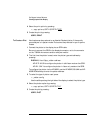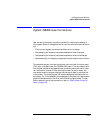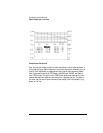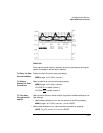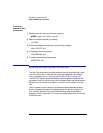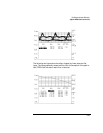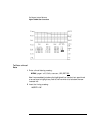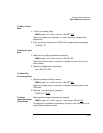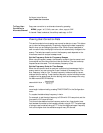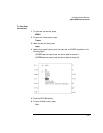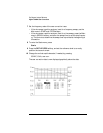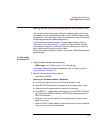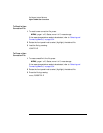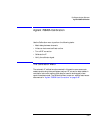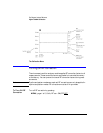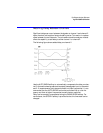
Eye-Diagram Analyzer Reference
Agilent 70820A User-Corrections
To Copy User-
Correction to
Alternate Channel
Copy user correction to an alternate channel by pressing:
MENU, page 1 of 2, Calib, user corr, other, copy to CH2
If channel 2 data is selected, the softkey reads copy to CH1.
Viewing User-Correction Data
This section explains how to assign user-correction data to a trace. This allows
you to view the data graphically. Graphically displaying the data is especially
helpful when you are designing a custom filter. When a trace is assigned to
user correction data, the display’s horizontal axis automatically changes to fre-
quency. The technique used to control the frequency scale depends on the
microwave transition analyzer’s sweep mode.
Set the Frequency Scale for Frequency Sweeps
When using a frequency sweep, the frequency scales of the microwave transi-
tion analyzer and the user-correction trace are identical. The start and stop
frequencies are the same. This includes any frequency offset.
Set the Frequency Scale for Time Sweeps
When the microwave transition analyzer is performing time sweeps, the fre-
quency scale of any user-correction trace is related to the sweep time. The
start frequency is set to 0 Hz. The stop frequency is determined by the sec-
onds-per-division setting. To set the stop frequency, use the following formula
to determine the seconds-per-division setting, then set the sweep time using
the Main menu’s SEC/DIV softkey.
where:
trace length is determined by pressing TRACE POINTS in the Configuration
menu.
F
stop
equals the desired stop frequency in hertz.
For example, to set the stop frequency to 5 GHz with 512 trace points, set the
time scale to 5.12 ns per division.
This formula also determines the frequency scale of any time domain trace
that has been formatted to the frequency domain using an FFT. The advantage
of using a trace formatted using an FFT is that the displayed upper frequency
limit can be higher than the available range of many RF sources.
seconds/division
trace length
20 F
stop
--------------------------------=



